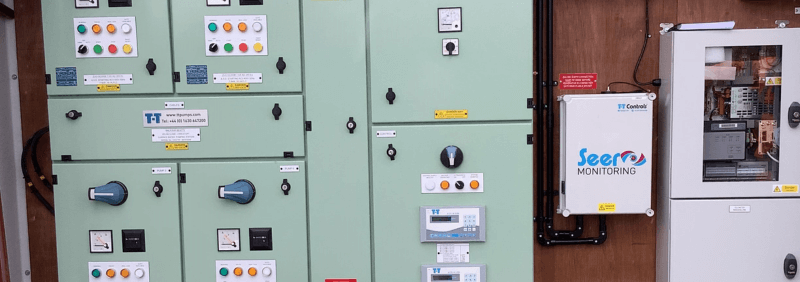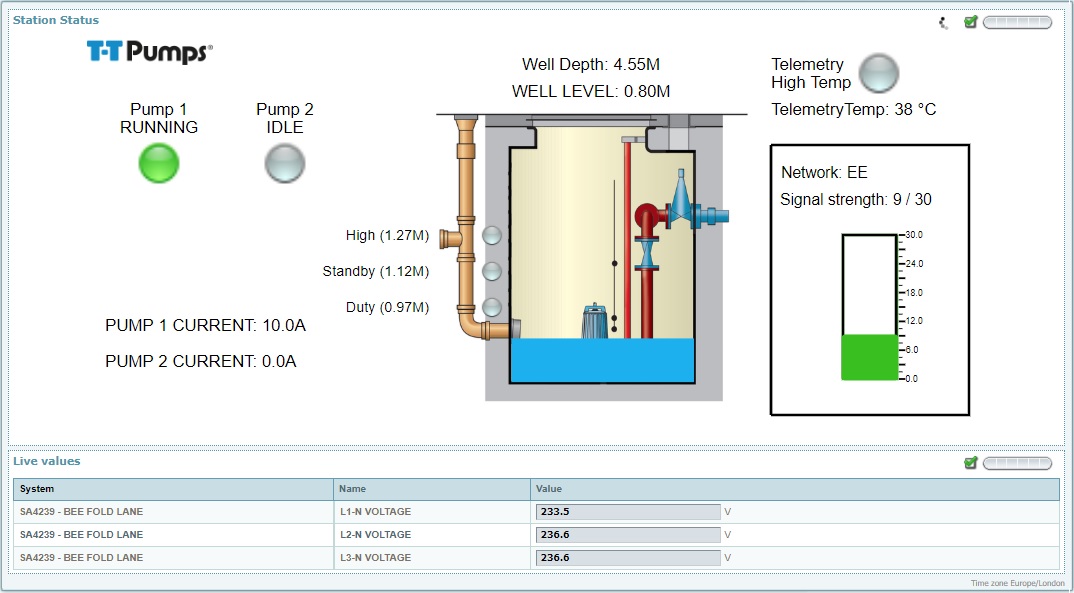Monitoring Know-How: Pump Station Performance Benefits

What is remote pump station monitoring?
Remote pump station monitoring is the process of continually tracking one or several operational statuses of the pumping system, such as incoming voltage, pump running duration and valve performance. This information is collected via a telemetry unit that transmits the data from the pump station to a central system (such as the cloud) to allow for further analysis.
These systems typically include an onsite and remote alarm feature that will notify you if certain pre-set operational boundaries have been breached, such as waste levels in a chamber being at high level for too long.
Identifying Behaviour & Establishing Rules
By continually collecting different kinds of data, an insight into the regular operating conditions of your station can be established – including trends such as demand spiking in the morning and the appropriate pump operating cycles for this period.
With this information, you can begin to recognise and manage data that does not match your system’s normal operating behaviour.
For example, at a pumping station with a consistent infill rate during a peak period of 6am – 9am, the pump may typically run for around four minutes to empty the sump. If one day we notice that the pump run time becomes longer despite the chamber inflow staying consistent, we can see that it is taking longer to empty the sump and begin to identify the root of the issue. In this case a blockage could be impacting the pump’s flow rate, or a stuck non-return valve could be causing pumped liquid to circulate back into the sump via a standby pump or pipework leg.
Benefits
Avoid Breakdowns
Using your established rules enables issues to be identified early and resolutions implemented proactively to prevent a complete system breakdown from occurring.
Identifying and resolving issues early is more both cost-effective and less disruptive to your site than requiring equipment replacements and emergency breakdown support. It also prevents any potential environmental damage from breakdown consequences such as an overflowing wet well.
Labour Attendance Efficiency
Being able to narrow down and identify potential issues with your pumping station, any engineers that attend the site will already have an understanding of the issue and any respective parts that may be required to resolve it.
Labour time onsite is therefore reduced, as the diagnosis process can be completed prior to attendance and the productivity of reactive maintenance staff is increased.
Increased Life Expectancy
Data mapping can show any areas in the system where performance is decreasing. These areas can then be targeted for servicing, maintenance or wear part replacements; ultimately extending the life expectancy of your pumping station’s equipment (such as pumps, valves, pipework and level control).
Pre-Established Data Set
Over time, a comprehensive and continuously updated data set can be accessed through the cloud, providing a valuable reference point for evaluating system performance.
In cases where multiple identical pumping stations are installed, these can be compared, enabling you to identify underperforming systems and investigate proactively to avoid any issues or disruptions.
Optimising Efficiency
By continually reviewing the pumping station during periods of high and low demand, decisions can be made to hold effluent within the chamber and to be pumped away during periods of lower energy costs running when there are no concerns over septicity.
Start and stop levels can also be adjusted to make the most of wet well storage space prior to any holding periods.
Pumping Station Peace of Mind
All of the above benefits provide financial, labour resource and environmental benefits thanks to the reduced chance of a breakdown and time needed onsite by engineers. Remote pump station monitoring provides the operator with complete peace of mind that their site is operating efficiently and any potential issues can be dealt with before they devolve further.
The above is a screen view of T-T's Seer Monitoring, showing live data relating to the pumping station it is installed in. Seer provides all of the remote monitoring benefits listed above, in addition to remote alarm conditions broadcast via email or SMS to multiple contacts when the station operates outside of certain preset parameters, such as wet well levels and incoming power.
Alarm conditions can be broadcast via email or SMS to multiple selected responders who are on duty, which reduces site visits and costs. This is a great option for remote pump monitoring.
When installed as part of our Level 2 or 3 Pump Maintenance Packages, your Seer Monitoring unit comes with data analysis by our in-house team of experienced mechanical, electrical and automation engineers.
Learn more about Seer Monitoring with T-T, or shop our comprehensive range of Seer units online.
Alternatively, discuss your remote monitoring needs with our experts at T-T Controls by calling +44 (0)1630 647200, emailing ttcontrols@ttpumps.com or completing our online enquiry form.

